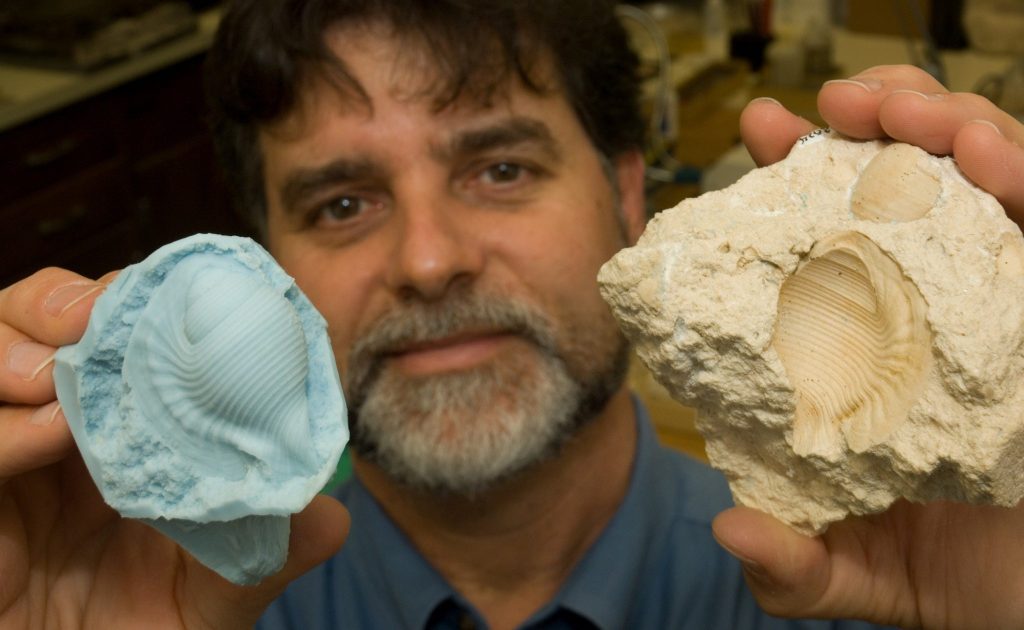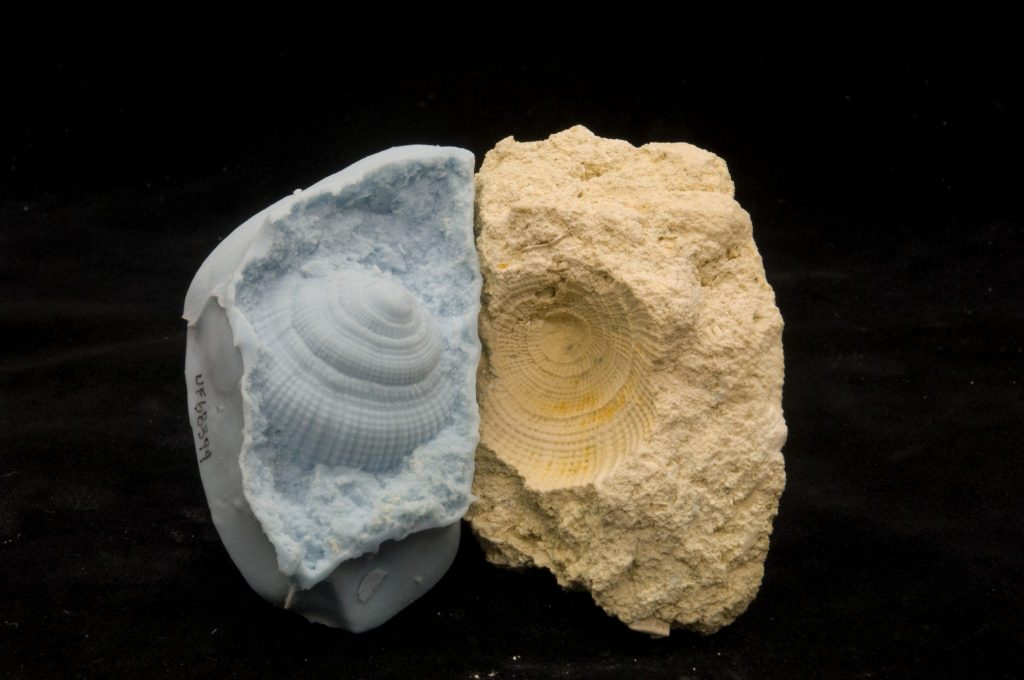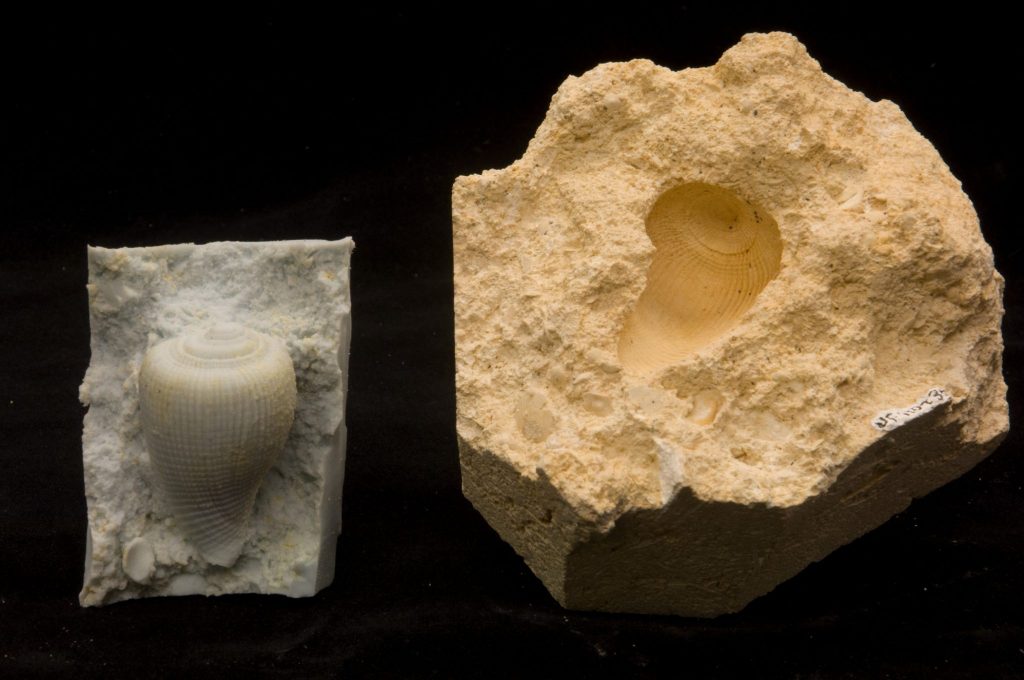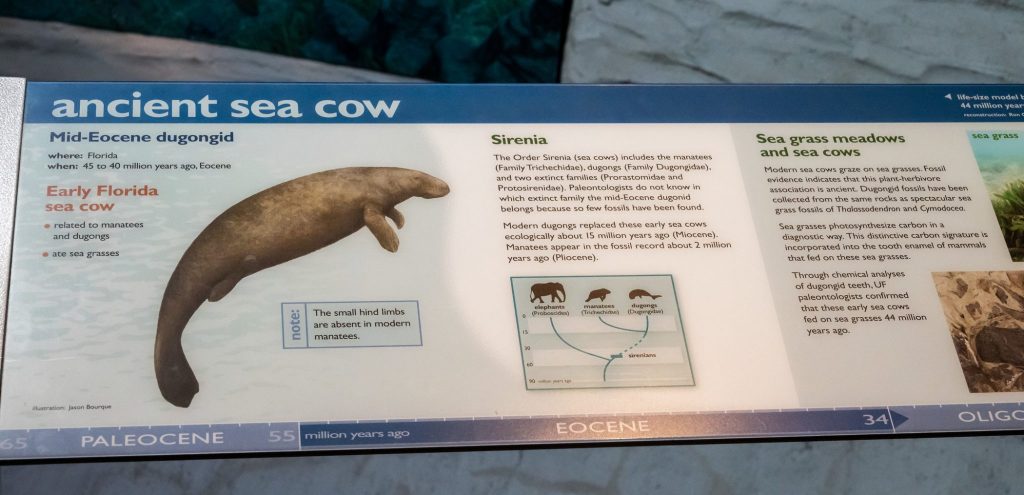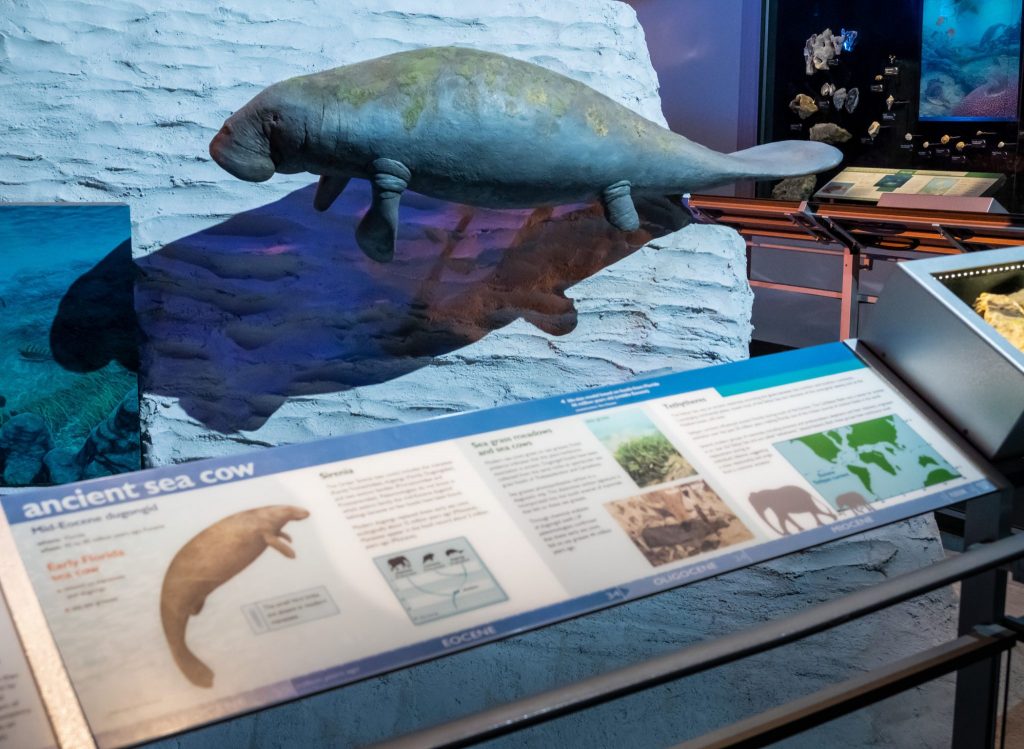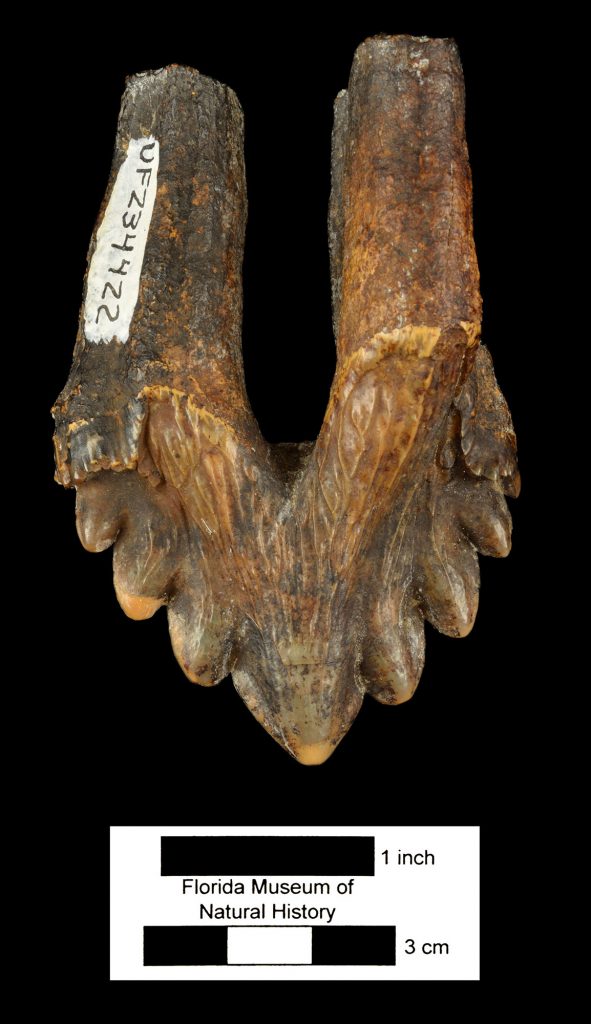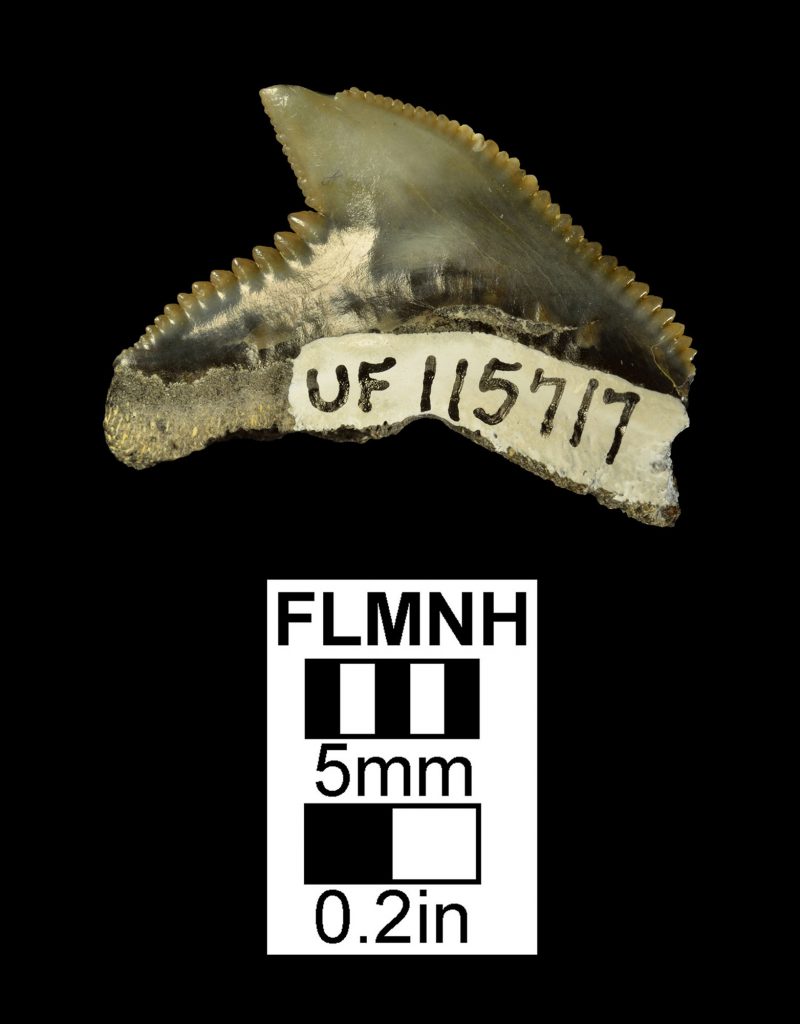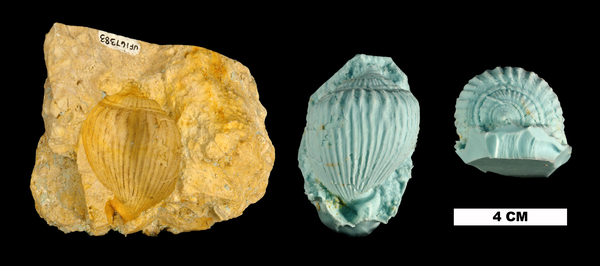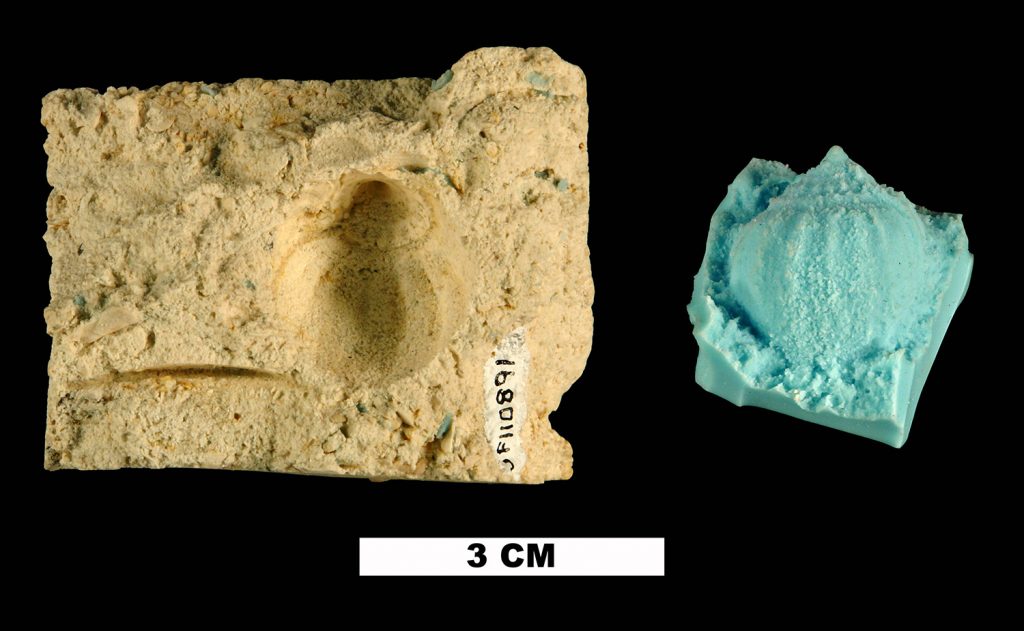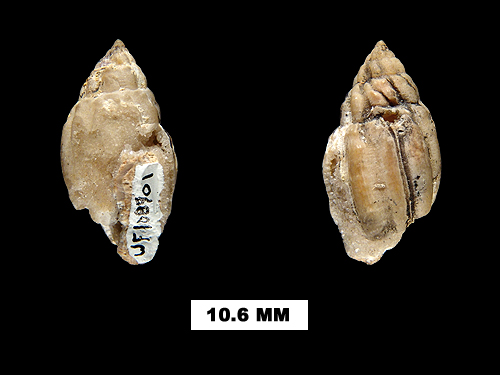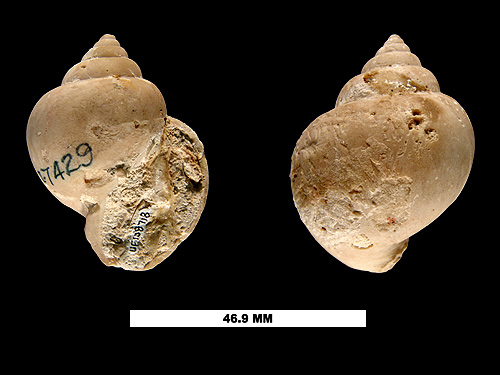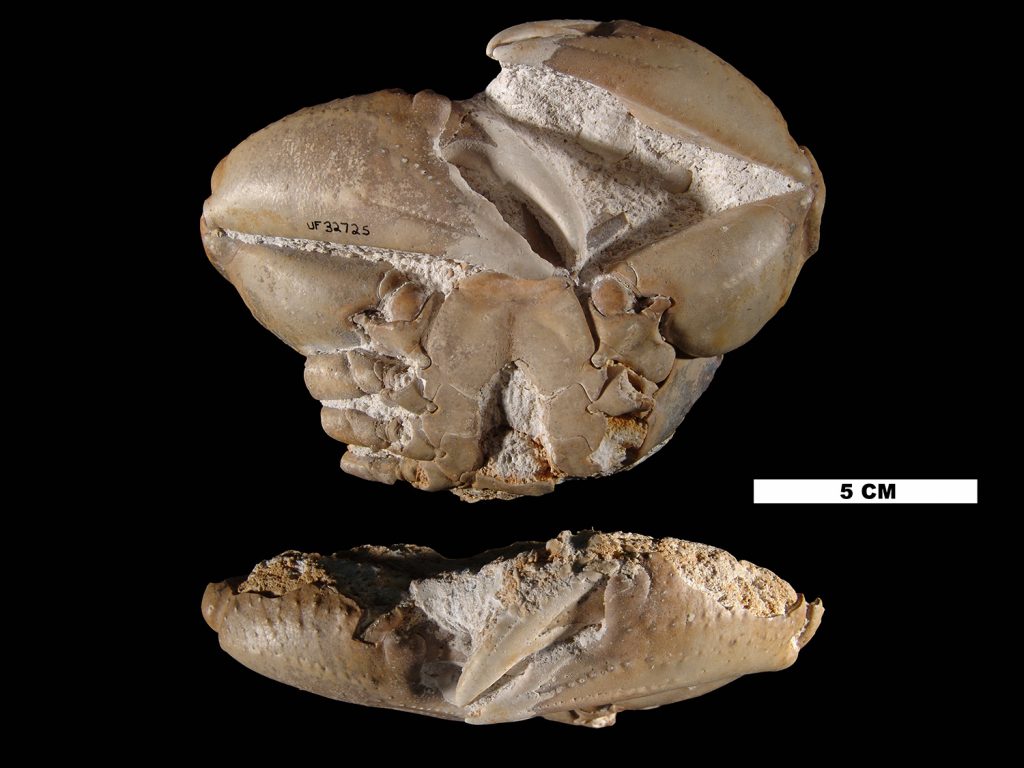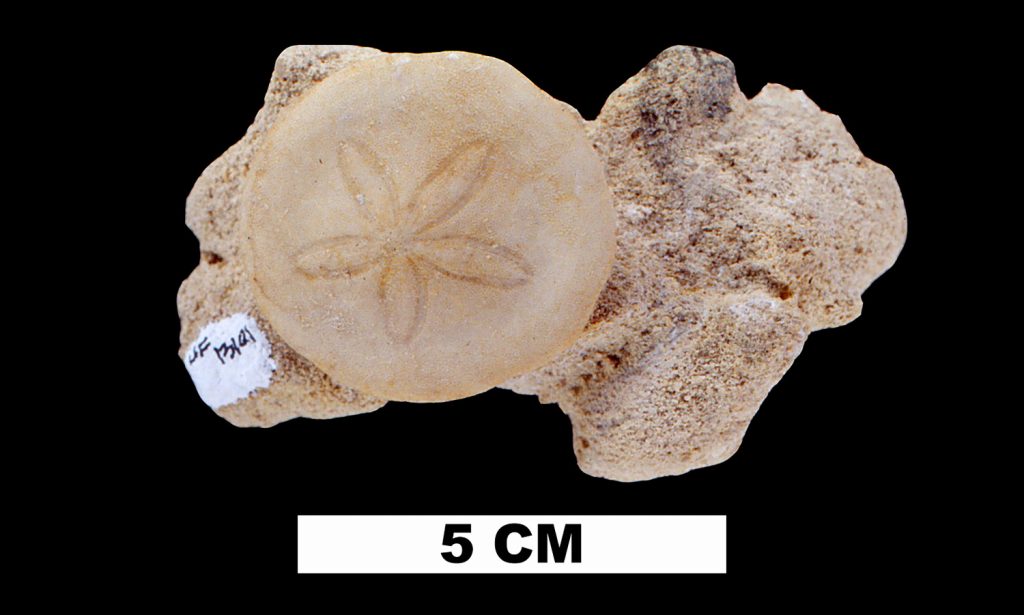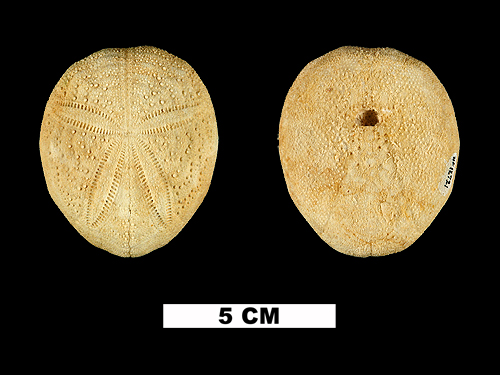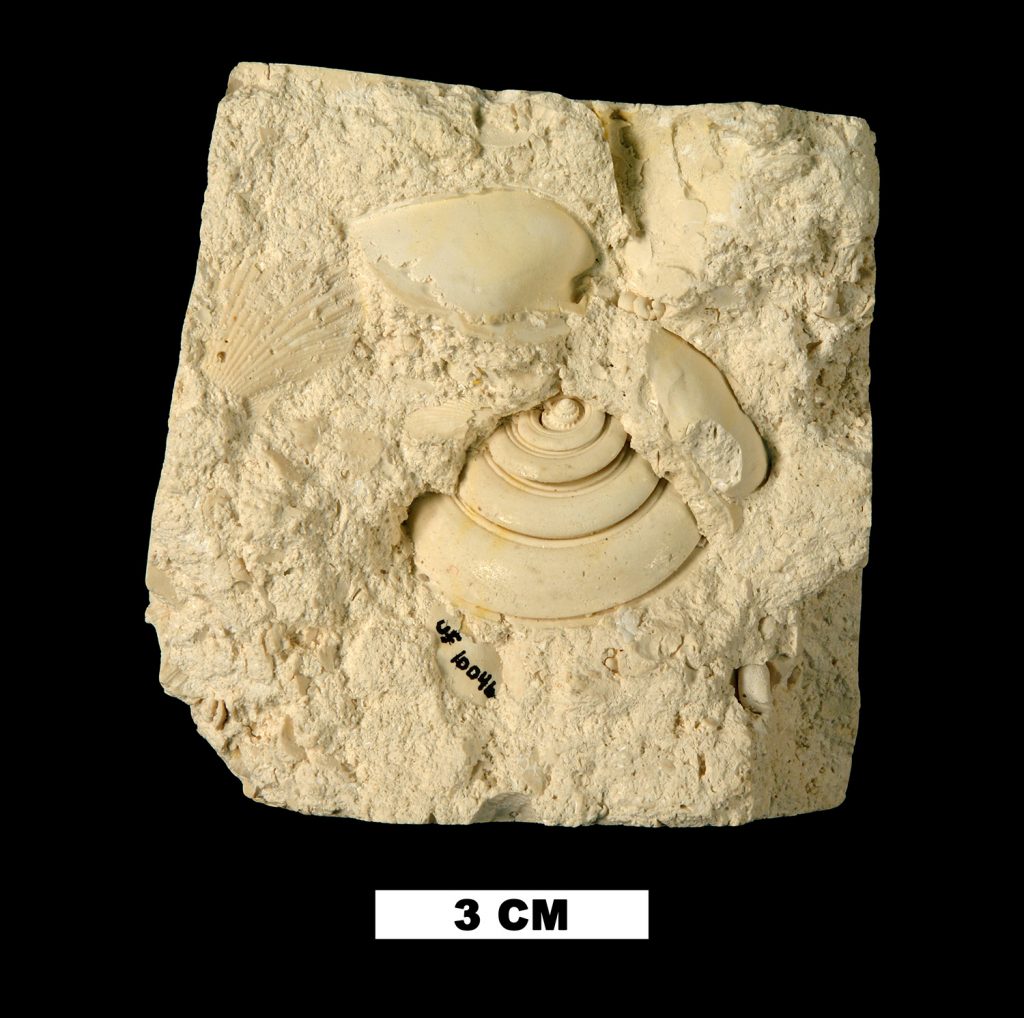Eocene Epoch
56 million to 34 million years ago
During the Eocene, the Earth was generally warmer than it is today and Florida was under water. The seafloor was a network of shallow and deep-water habitats across the submerged limestone plateau. It was home to a variety of marine animals including a rich diversity of invertebrates like sea urchins and mollusks. There were also primitive sea cows, toothed whales, sharks, and crocodilians that called Florida home. Explore some of the marine plants and animals of Florida’s Eocene:
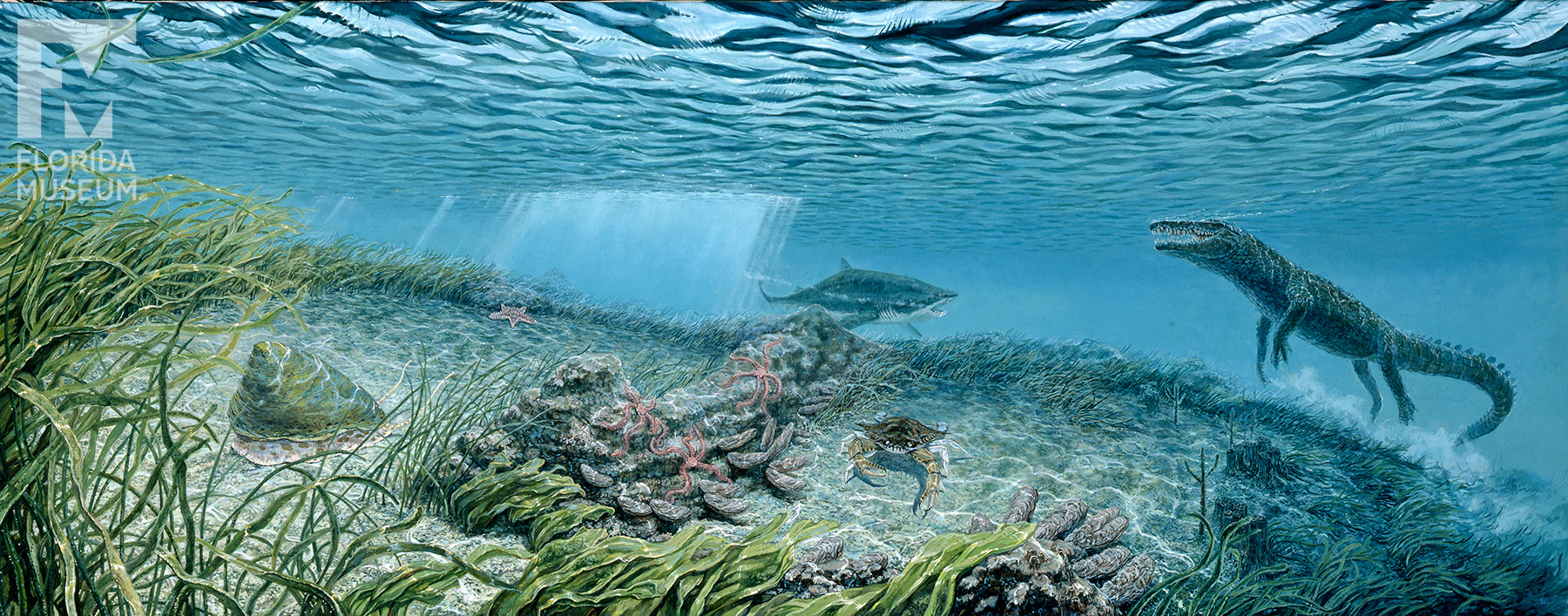
This painting was commissioned from artist David Miller for our Florida Fossils exhibit. Learn about the Eocene plants and animals represented:
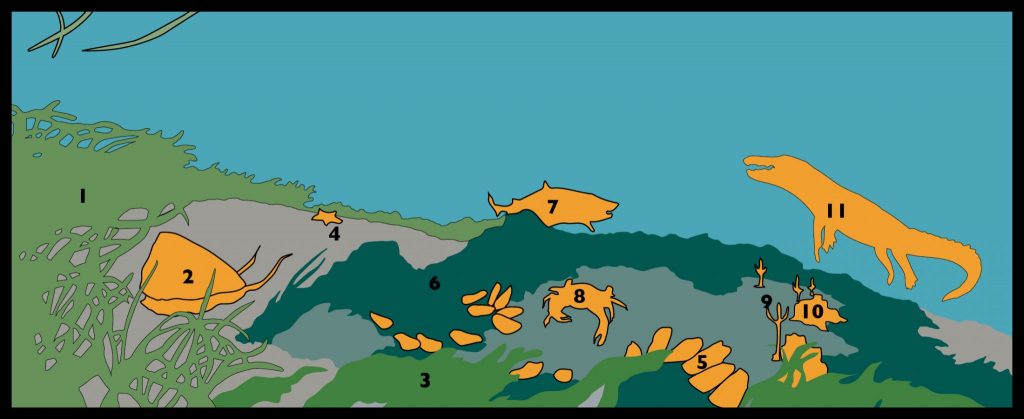
- Thalassodendron auricula-leprosis (sea grass)
- Velates floridanus (extinct Florida nerite)
- Cymodocea (sea grass)
- Oyenaster oblidus (sea star)
- Hyotissa podagrina (gouty oyster)
- Brittlestar
- Striatolamia macrota (sand tiger shark)
- Swimming crab
- Branching coral
- Caulastrea portoricensis (coral)
- Undetermined crocodilian
Highlights
Many fossil invertebrates from Florida’s Eocene consist of external molds. These were formed when an organism’s skeleton dissolved and left a cavity in the surrounding hardened (lithified) sediment. These hollows are difficult for paleontologists to study. Exact positives (casts) of the former skeletons are produced when silicone rubber is poured into these cavities. Read about how this is done
Researchers show that modern seagrass meadows sustained a wide variety of animals, and the fossil record suggests Eocene seagrass meadows were just as important marine habitats for many species. By analyzing ancient sea cow teeth, paleontologists know these marine mammals once fed on seagrass. This early Florida sea cow, related to manatees and dugongs, had small hind limbs that are absent on modern manatees. Check out the ancient sea cow in the exhibit or read about fossil seagrass
Explore more fossils
Note: Because our scientific knowledge is always expanding, some information like species names may have changed since the Florida Fossils exhibit was opened in 2004. The information on this page has been updated and may differ from the exhibit panel.
More
Florida Fossils: Evolution of Life and Land exhibit
Florida Vertebrate Fossils online resource
